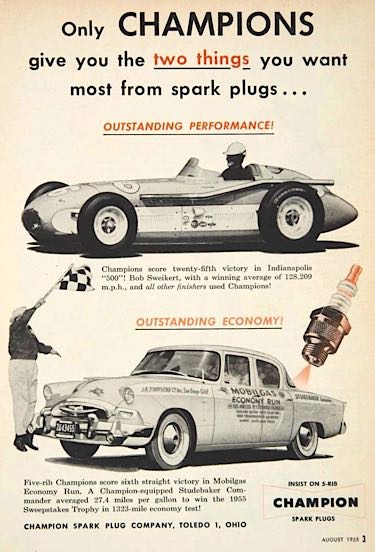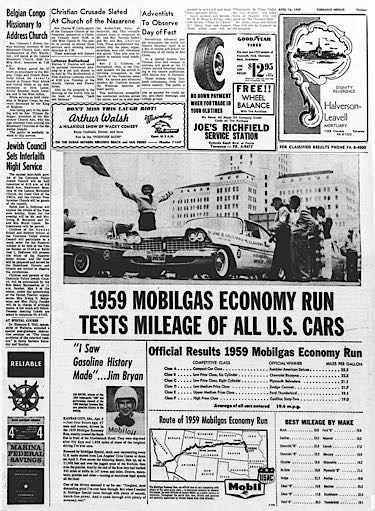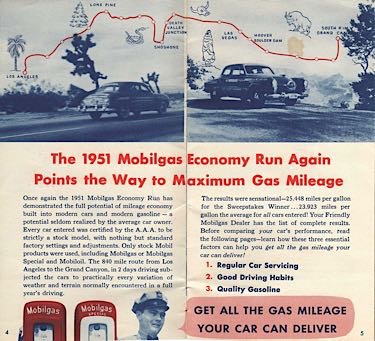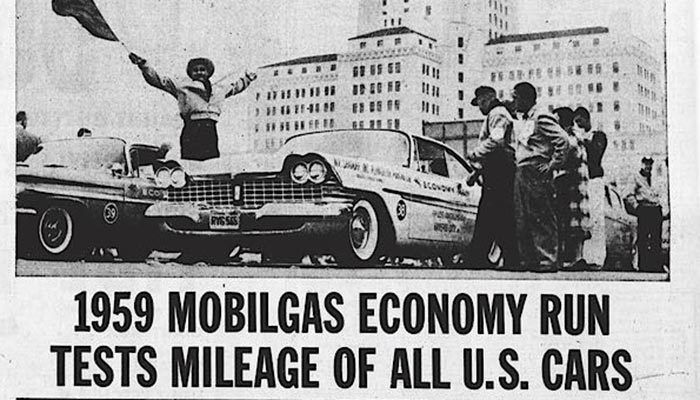 The Mobil Oil Economy Run was a real world fuel efficiency test before fuel efficiency numbers were posted on window stickers. The event ran for 32 years until it was abruptly canceled in 1968.
The Mobil Oil Economy Run was a real world fuel efficiency test before fuel efficiency numbers were posted on window stickers. The event ran for 32 years until it was abruptly canceled in 1968.
The formula was simple: take new cars and measure their fuel economy on a coast-to-coast route under real conditions. Back in the day, the event had just as much press coverage as the Indianapolis 500.
Early economy runs were two-day events starting in Los Angeles and ending at the Grand Canyon in Arizona. In 1950, the run was turned into a six-day event typically ending in Detroit or New York. Car manufacturers supported the event because the press coverage and advertising bragging rights were worth their weight in gold. The race worked because the average car buyer had managed to survive the Great Depression and the rationing during WWII and had a different set of priorities.
 To prevent the manufacturers from modifying vehicles for the run, officials purchased the cars at random dealerships. They were inspected to make sure they were “stock” and not modified. Hoods were sealed so they could not be tampered with. Stock gas tanks were disconnected and a special fuel tank was mounted in the trunk so fuel consumption could be accurately measured.
To prevent the manufacturers from modifying vehicles for the run, officials purchased the cars at random dealerships. They were inspected to make sure they were “stock” and not modified. Hoods were sealed so they could not be tampered with. Stock gas tanks were disconnected and a special fuel tank was mounted in the trunk so fuel consumption could be accurately measured.
The automakers provided the drivers who had to ride with an official. Some drivers became celebrities because they could drive with a steady hand and a light foot. Teams were allowed to drive the vehicle 2,500 miles to break-in the engine before the competition. During break-in periods, teams would ride the brakes and corner hard in order to create clearance in the brake drums, wheel bearings and scrub in the bias-ply tires. Vehicles were serviced by officials and impounded so no secret substances could be poured into the fuel tank or crankcase. Manufacturers were only allowed to paint the vehicles for promotional purposes.
 In 1968, the race was cut short in Indianapolis due to the assassination of Martin Luther King, Jr. By the end of 1968, Mobil announced it was pulling the plug on the event to concentrate on performance and racing. The winner of the event was a 1968 Rambler American averaging 27.8 MPG.
In 1968, the race was cut short in Indianapolis due to the assassination of Martin Luther King, Jr. By the end of 1968, Mobil announced it was pulling the plug on the event to concentrate on performance and racing. The winner of the event was a 1968 Rambler American averaging 27.8 MPG.
What killed the Mobil Economy Run? Some say that it became too expensive for Mobil to run. But, it was also that America was changing, and most younger buyers put performance ahead of fuel economy. I wonder, if economy runs were still around today, would the VW Diesel problem not have happened?













